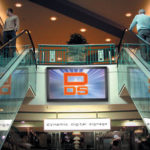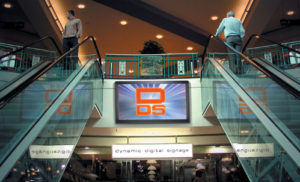
Students enrolled in Texas State Technical College’s Digital Signage Technology program will be able to network with digital signage professionals and stay up to date with the latest in interactive technology after the school became the nation’s first college chapter of the Digital Signage Federation (DSF), a nonprofit trade organization.
The DSF announced the industry’s first college partner May 17, and TSTC officials said the partnership would give its students access to industry news and trends that could make them more marketable when they finish the signage associate degree program and enter the workforce.
There are three students in TSTC’s digital signage program, which launched in the spring 2010 semester with about $1 million in funding from the U.S. Department of Education, said Patricia Golin, a program specialist at the college. Golin expects at least five more students to join the digital signage program next fall, and the school projects 20 signage students by fall 2011.
“We researched all kinds of emerging technologies involving digital graphics, and we saw digital signage as one of the most in-demand skill sets becoming more and more common out there,” Golin said, explaining why TSTC used the federal funding to begin a digital signage curriculum.
Geri Wolff, membership director for the DSF, said that outside TSTC, there are currently “no other degrees awarded in or coursework specific to the field of digital signage,” although “other colleges and universities … include aspects of digital signage in their marketing or graphic arts curricula.”
John Johnson, executive director of the Virginia-based DSF, established last January, said TSTC students studying digital signage would receive all the perks of federation membership, including quarterly business surveys, white papers detailing industry best practices, weekly eNewsletters, and access to the federation’s online membership directory, helping students make contact with potential employers.
Linking their campuses to the DSF’s membership, Johnson said, could help grow student enrollment in digital signage courses and help launch digital signage curriculum at colleges and universities nationwide.
“I think the opportunity to work with any new technology … has an attractiveness to it,” Johnson said. “We are in the digital age … so it makes sense to have a relationship with any type of academia. Hopefully, we can make a contribution to higher education.”
A report released in March by Northern Sky Research, an international market research firm, showed the digital signage industry growing steadily, but slower than analysts predicted several years ago as the country’s economic downturn affects every market. Digital signage’s advertising revenue was $1.68 billion in 2009 and is projected to be more than $7 billion by 2019, according to the market research.
Digital signage is used at more than 596,000 sites worldwide, according to the research. That number is expected to double by 2019.
TSTC’s digital signage students must complete 60 credit hours of coursework that ranges from learning Adobe software such as Flash and Photoshop, to identifying and evaluating audience demographics. Starting next school year, Golin said, the demographics lesson will include a class assignment that puts students’ digital signage work on the college’s campus and has passersby touch a button on the screen that gives the sign a “thumbs up” or a “thumbs down.”
Digital signage students then will incorporate this feedback from peers, staff, and faculty members and redesign their project, Golin said.
“We’ll see if the results are better at that point,” she said.
Golin said the ubiquity of digital signage can be seen in the most rural parts of Texas, where gas station pumps have digital screens for instruction and advertising.
“This is an emerging tech that really needs to be taken into account,” she said. “When you see it permeating these small towns, you know it’s something that has grown and will continue to grow.”
Any burgeoning field will draw incoming college students, Johnson said, so if digital signage spreads in shopping malls, schools, and colleges, students looking for a major will see digital signage as a legitimate option.
“As we see it being used more and more, I’m sure there will be more students that will have an interest in it,” he said. “I think it will be a national progression.”
Links:
Texas State Technical College Digital Signage Technology program
- Research: Social media has negative impact on academic performance - April 2, 2020
- Number 1: Social media has negative impact on academic performance - December 31, 2014
- 6 reasons campus networks must change - September 30, 2014

